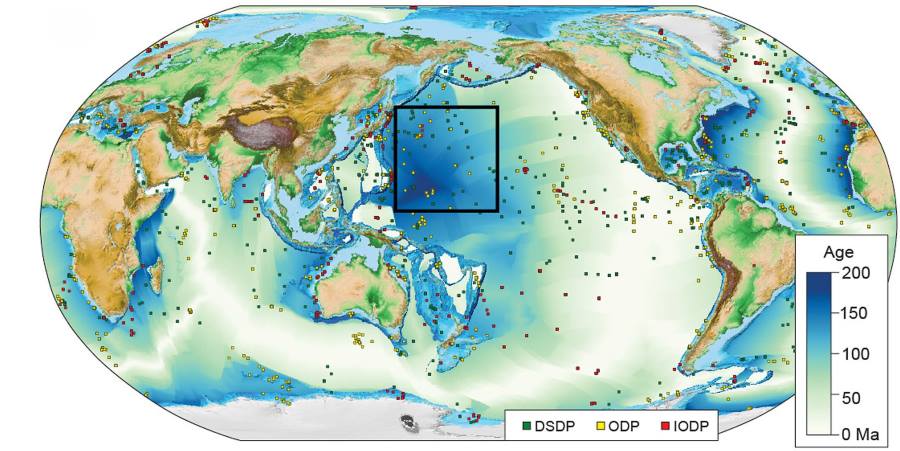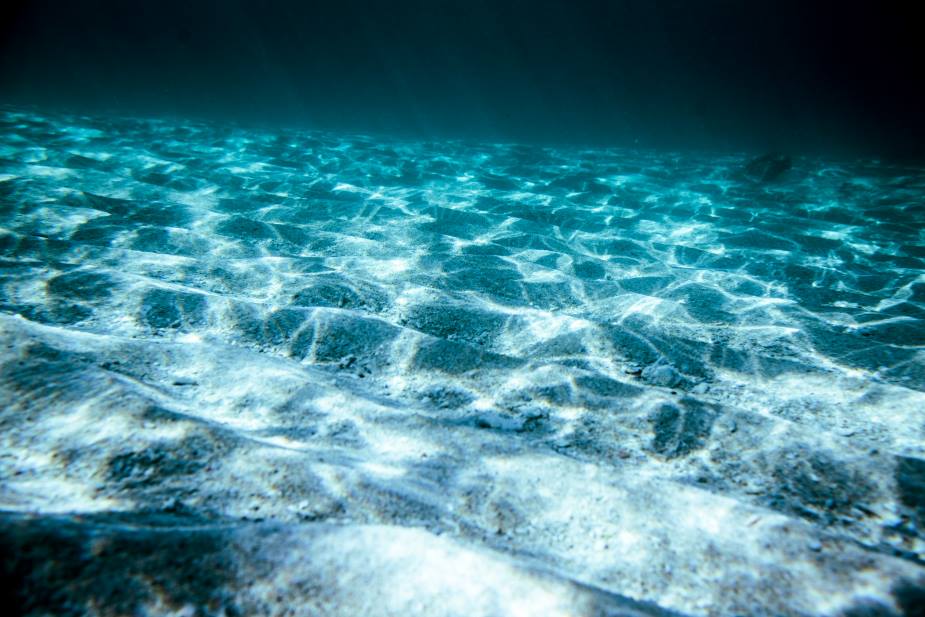Summary:
Ancient sediment buried beneath the Pacific Ocean may hold the key to understanding how Earth’s climate and ecosystems will respond to global warming. In a new commentary published in Paleoceanography and Paleoclimatology, researchers emphasize the importance of expanded scientific ocean drilling efforts to study high-resolution sediment cores from the Pacific basin, home to more carbon and heat than any other ocean.
While existing climate models rely heavily on data from this region, the sediment records currently available are limited in number and geographic range. “When you’re extrapolating from such a huge time and spatial scale, you need more than one or two data points to get complete records and ground truth modeling,” said co-author Elizabeth Griffith of The Ohio State University. The October 2024 workshop, held at Ohio State’s Stone Laboratory, brought together international scientists to coordinate future efforts aimed at revisiting legacy cores, drilling new sites, and uncovering better geological analogs for future climate scenarios.
Sites known as Pacific Highs, including Shatsky Rise and Magellan Rise, are of particular interest due to their potential to yield well-preserved paleoenvironmental records. With limited existing material and the recent loss of a U.S. drillship, researchers warn that sustained collaboration and funding will be essential to advance climate science and train the next generation of ocean researchers.

Under the Pacific Ocean, ancient sediment reveals Earth’s history
Take, for instance, the Pacific Ocean. The largest and deepest ocean basin on the planet, it is a vital wheel in many complex ecological systems, including the carbon cycle. But despite its vast influence, much of what scientists know about the Pacific stems from only a few continuous long sediment core records recovered over the last five decades, said Elizabeth Griffith, co-author of a new paper and a professor in earth sciences at The Ohio State University.
“It’s easy to forget that two-thirds of our planet is covered with salty ocean water, especially when you don’t live near the coast,” said Griffith. “It’s also hard to realize just how much of it we haven’t explored yet.”
In past decades, studying the physical environment of the deep ocean could be a challenging endeavor, partly due to how difficult and time-consuming it is to reach these dark and undiscovered depths. Fortunately, scientists today largely rely on scientific ocean drilling to collect important marine samples, a process that involves specialized ships that use cutting-edge technology to bore down and extract sediment cores from the ocean floor.
Depending on where sediment cores are collected, scientists are able to learn many novel things about Earth’s history and dynamics. For example, samples retrieved from places known as Pacific Highs, undersea shallow geological features that have the potential for well-preserved paleoceanographic records, have helped scientists answer key research questions about subjects like the evolution of life, past extinction events, Earth’s tectonic and volcanic history as well as slight changes in its orbit.
While only eight of these sites, found in the central and western North Pacific, have ever been explored using modern drilling technologies, discoveries made in these locations offer valuable insights into some of the most dynamic environmental shifts of the past 100 million years, said Griffith.
“When you’re extrapolating from such a huge time and spatial scale, you need more than one or two data points to get complete records and ground truth modeling,” she said.
Yet as global temperatures continue to rise and cores collected from these sites are depleted of material that might help reveal key events, new data is needed to continuously improve future climate models and transform our understanding of Earth’s complex life systems.
To better prioritize research questions best answered by future ocean drilling discoveries, the international scientific ocean drilling community held a workshop in October 2024 at The Ohio State University’s Stone Laboratory.
Participants determined that in order for ocean discovery science to move forward, scientists will need to create both short- and long-term plans for recovering these sediments.
“One of the benefits of the ocean drilling community has always been that it’s a larger effort,” said Griffith. “There’s support for this idea that we’re answering big questions on a scale that you just can’t do in a single lab or just working with a small subset of people.”
Overall, researchers suggest that future reconstructions of Earth’s past environmental stages will require more data, as gaps in spatial and temporal data coverage hinder the community’s ability to test various hypotheses and validate model simulations of the Pacific Ocean’s behavior during different climate states. Notably, existing sediment core materials are too degraded to apply some new techniques to test these models.
The paper also notes that taking the time to dig deep into whatever long-buried secrets our ocean floors hold will also be beneficial in predicting what tomorrow’s climate future might entail, said Griffith. “Warm periods in Earth’s recent history might tell us something about future conditions on Earth and how life will respond to those changes,” she said.
Nevertheless, while drillship expeditions allow scientists to study some of Earth’s most challenging environments, they also require massive amounts of coordinated international collaboration. Ocean drilling science must expand on these opportunities to grow, but with the recent loss of a U.S. riserless drillship, next-generation scientists worry that losing access to vital data now could jeopardize the field.
“Working with legacy core material is a crucial part of my research, but it will never replicate the experience of sailing on a deep-sea scientific drilling expedition and fostering international collaboration at sea,” said Batoul Saad, co-author of the paper and a PhD student in earth sciences at Ohio State.
While private and public sector leaders work to preserve U.S. federal research funding, scientific experts suggest identifying new opportunities to expand international, collaborative science and help sustain ocean drilling science.
“As individuals, much of the work of supporting science involves just being curious about the planet that we live on and that sustains us,” said Griffith. “Once you become curious, realizing how much you impact your surroundings leads to better decisions and new scientific discoveries.”
***
The U.S. Science Support Program provided financial support for U.S. participants in the workshop, while Deutsche Forschungsgemeinschaft (German Research Foundation), European Consortium for Ocean Research Drilling MagellanPlus Workshop Series Travel Grant, Japan Agency for Marine-Earth Science and Technology, and Australian and New Zealand International Scientific Drilling Consortium provided support for international participants. Thomas Westerhold of the University of Bremen in Germany was a co-author.
Journal Reference:
Pacific Highs Working Group, Griffith, E. M., & Westerhold, T., ‘Pacific Highs: A treasure trove of past warm climate archives’, Paleoceanography and Paleoclimatology 40, 6: e2025PA005133 (2025). DOI: 10.1029/2025PA005133
Article Source:
Press Release/Material by Tatyana Woodall | Ohio State University (OSU)
Featured image credit: Kireyonok_Yuliya | Freepik




